Haroon Mirza
"Ceremonies and Rituals"
Found objects such as bass amps and solar panels from Haroon Mirza’s intensely precarious assemblage, connecting light and sound. Electricity, considered by Mirza to be his primary medium, acquires an almost material quality as the artist manipulates its frequency and wavelength. Characterized by clean lines, geometric forms, and a restrained use of color, the minimalist aesthetics of his kinetic sculptures contrast with the complexity of the sound and pattern-making mechanisms that often underpin his audio-visual compositions.
Titled “Ceremonies and Rituals”, Mirza’s latest solo exhibition delves deeper into his fascination with electricity, exploring its uncharted realms at the intersection of the mystical and the scientific. The exhibition contemplates sacred geometries and ritualistic elements, emphasizing the artist’s ongoing inquiry into sound used in rituals and ceremonies, and how mystical experiences might be elucidated through neurological processes, especially in the context of research into psychedelics.
At the heart of his presentation is Cymatic Ceremony (2024), a multimedia installation featuring a two-channel video, shown for the first time in this exhibition. Synchronized to a set of drums that perform live, the work experiments with Cymatics*1, a branch of modal vibrational phenomena. In this piece, Mirza features artist Helga Dóróthea Fannon performing a ritualistic act in a forest, where she scatters seeds on a Chladni plate*2. The plate, resonating at various frequencies including 111 Hz, reveals intricate patterns in response to the singer's voice (Juliette Fraser). Many natural forms, such as snowflakes and seashells exhibit cymatic-like patterns due to their inherent vibrational frequencies and resonances. This work highlights these forms as studied by Hans Jenny, Swiss physician and advocate of Anthroposophy, as well as the mystical frequency of “Om”, postulated by the artist at 111 Hz.
The exhibition also features Mirza’s recent series, “Ogdoad Interstellar Magnet (Solar Cell Circuit Compositions).” These pieces draw inspiration from an 8-pointed star, originally depicting the sun with eight primary rays in the Tartessian civilization, today common in the Arab world as the Rub al-Hizb. At the centre of each, a meteorite is found wrapped in a copper coil, effectively enveloping it in a magnetic field.
Mirza arranges solar cells to form intricate circuits that generate LED illumination, framing miniature paintings by Pakistani artist Brishna Amin Khan. In European classical painting and Catholic iconography, the luminous aura, such as a halo or beacon, serves as a symbolic signifier of sanctity and divinity. “Yet the individuals in this series of works are pagan lay people or icons of psychedelia such as the indigenous healer Olivia Arévalo*3.” The three Illuminated Solar Cell Circuit Compositions interact with the daylight in the gallery space, each depicting scene directly connected to the film Cymatic Ceremony, exploring different stages of shamanistic rituals engaging nature and altered stages of consciousness.
“Ceremonies and Rituals” marks Haroon Mirza’s second solo exhibition with the gallery in ten years, presenting the most recent evolution of his artistic practice. From referencing acid house with socio-political commentaries to the studies of Cymatics and shamanistic rituals, Mirza’s consistent investigation of sound, light, and electricity as a medium is nourished by an increasingly collaborative approach. This exhibition weaves together a pulsating tapestry of scientific and mystical inquiry, envisioning electric frequencies and their inherent potential power.
Haroon Mirza CV
*1 Cymatic: The visualization of the natural vibrations of sounds and objects mediated by substances like sand or water. It also refers to the study of this phenomenon, pioneered by Hans Jenny (1904-1972). Influenced by Jenny, a proponent of anthroposophy, cymatics has been applied to acoustic therapy, with research conducted since the 1940s on resonating specific frequencies within the body's tissues to activate the healing powers within one’s body.
*2 Chladni Plate: A device consisting of a horizontal metal plate, often square or circular, fixed to a base at a single point in the center. When specific frequencies are applied to sand on the metal plate, it forms symmetrical patterns as the sand on the vibrating areas bounces off and accumulates in the areas that remain still, becoming the nodes of vibration. These patterns are known as Chladni figures, named after the German physicist Ernst Chladni (1756-1827).
*3 Olivia Arévalo: A leader of the “Shipibo-Conibo,” an indigenous group living in the Amazon, she was one of the first female sharmans in Peru. Born into a family dedicated to medicine, she was known as a great healer who inherited traditional medical practices. In 2018, at the age of 81, she was shot and murdered near her home, allegedly by a Canadian perpetrator.
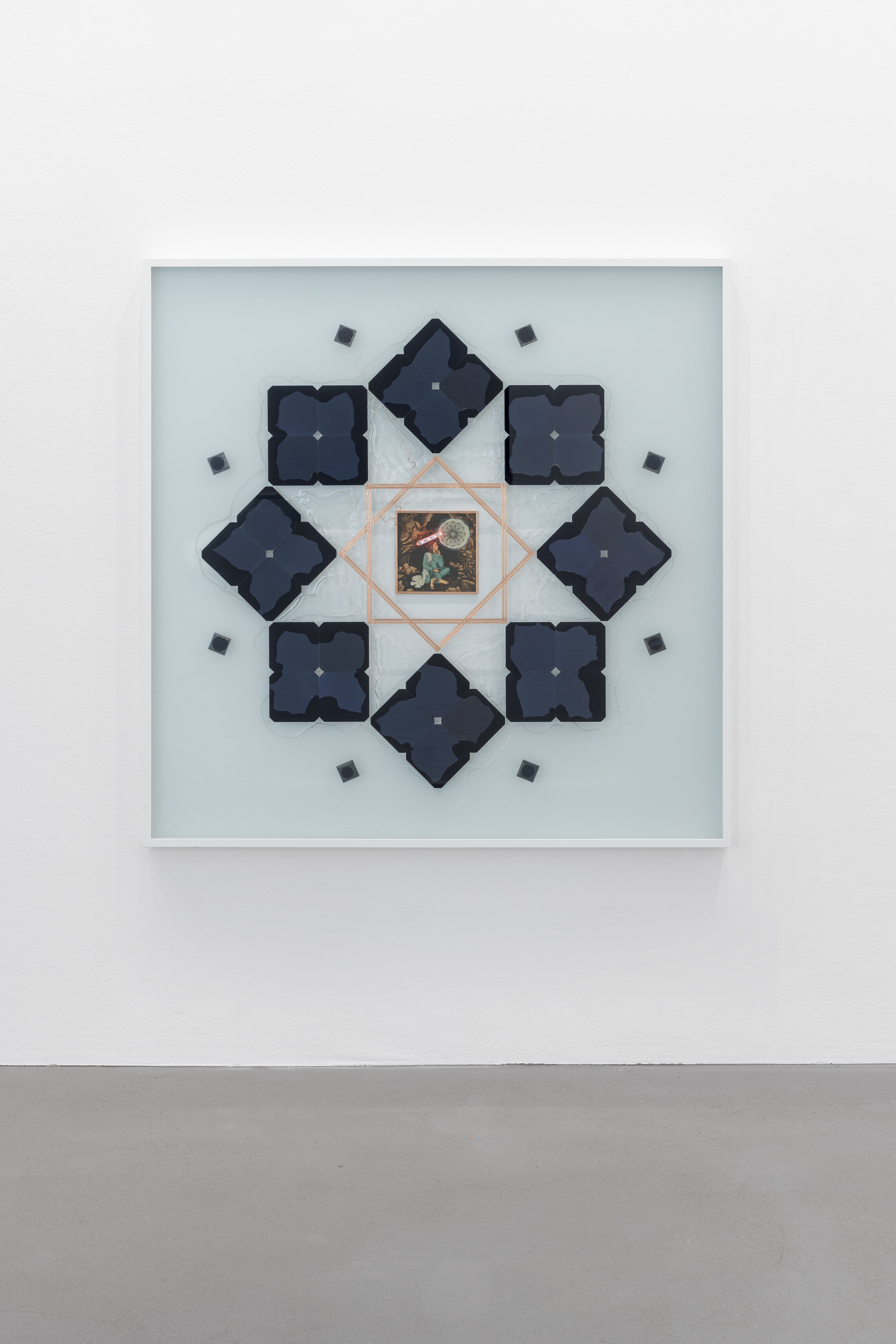
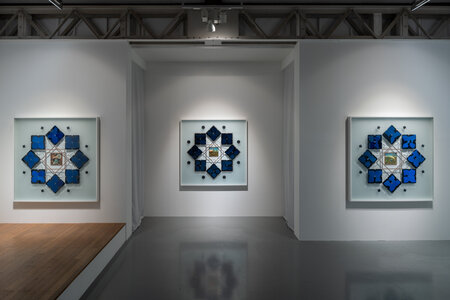
"Ceremonies and Rituals" 2024, SCAI THE BATHHOUSE, photo by Nobutada Omote
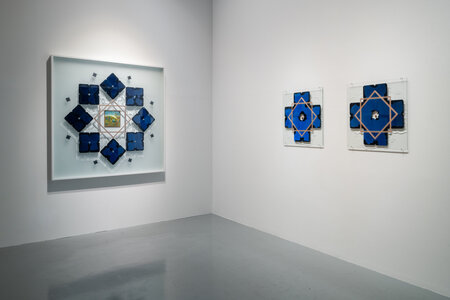
"Ceremonies and Rituals" 2024, SCAI THE BATHHOUSE, photo by Nobutada Omote
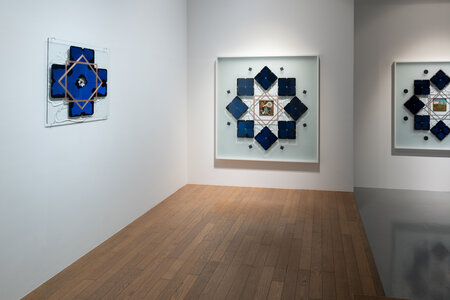
"Ceremonies and Rituals" 2024, SCAI THE BATHHOUSE, photo by Nobutada Omote
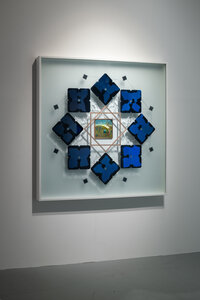
"Ceremonies and Rituals" 2024, SCAI THE BATHHOUSE, photo by Nobutada Omote
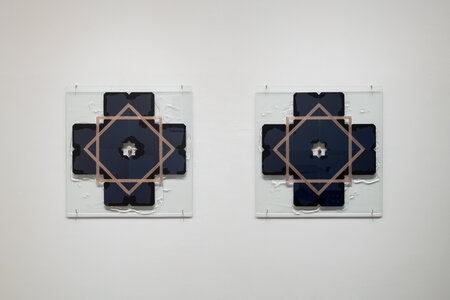
"Ceremonies and Rituals" 2024, SCAI THE BATHHOUSE, photo by Nobutada Omote
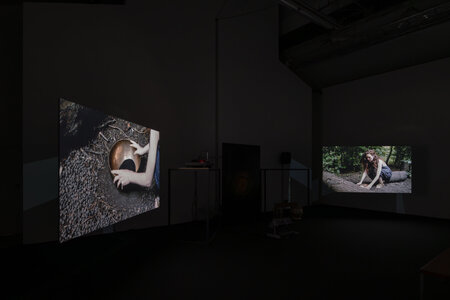
"Ceremonies and Rituals" 2024, SCAI THE BATHHOUSE, photo by Nobutada Omote
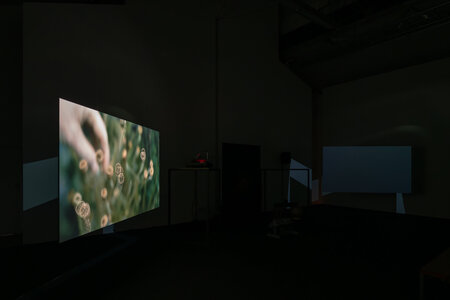
"Ceremonies and Rituals" 2024, SCAI THE BATHHOUSE, photo by Nobutada Omote
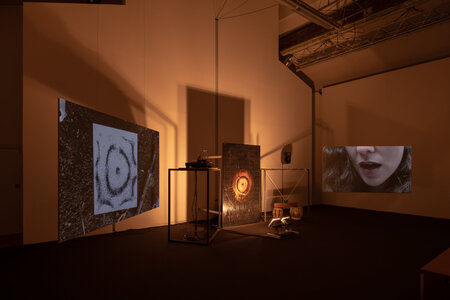
"Ceremonies and Rituals" 2024, SCAI THE BATHHOUSE, photo by Nobutada Omote
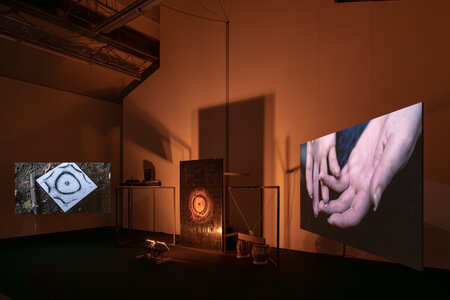
"Ceremonies and Rituals" 2024, SCAI THE BATHHOUSE, photo by Nobutada Omote

"Ceremonies and Rituals" 2024, SCAI THE BATHHOUSE, photo by Nobutada Omote
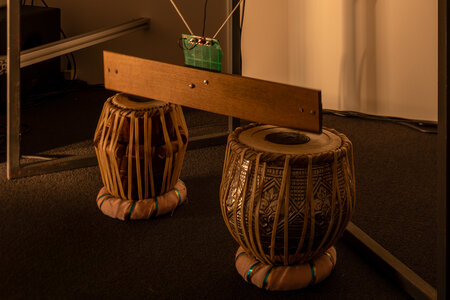
"Ceremonies and Rituals" 2024, SCAI THE BATHHOUSE, photo by Nobutada Omote